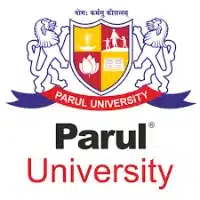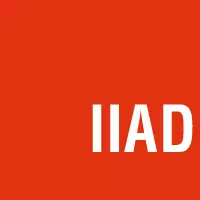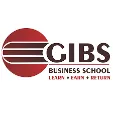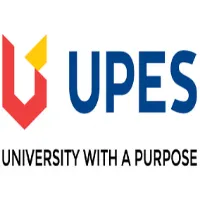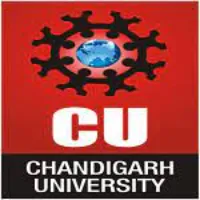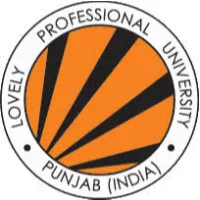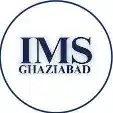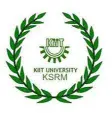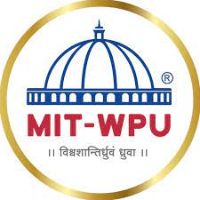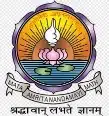Latest Applications Open 2024:
GATE 2024 Syllabus of Geology & Geophysics has been Released. GATE 2024 is a national-level exam organized by IISc Banglore. The Engineering Graduation Skill Test (GATE 2024) is organized for admission to PG courses in engineering and technology, specifically ME / M.Tech.
In this article, GATE Syllabus 2024 has been provided for the students and aspirants with a Paper code for all the branches, and Also GATE 2024 Exam Pattern is provided.
GATE 2024 is a national-level exam organized by IISc Banglore. The Engineering Graduation Skill Test (GATE) is organized for admission to PG courses in engineering and technology, specifically ME / M.Tech.
GATE 2024 Geology & Geophysics Syllabus – PDF Released
![]() GATE 2024 Geology & Geophysics Syllabus has been Released. Click to Download Geology & Geophysics Syllabus Pdf.
GATE 2024 Geology & Geophysics Syllabus has been Released. Click to Download Geology & Geophysics Syllabus Pdf.
Part A: Common Section
Earth and Planetary system – size, shape, internal structure and composition of the earth; the concept of isostasy; elements of seismology – body and surface waves, propagation of body waves in the earth’s interior; Gravitational field of the Earth; geomagnetism and paleomagnetism; continental drift; plate tectonics – relationship with earthquakes, volcanism and mountain building; continental and oceanic crust – composition, structure, and thickness.
Weathering and soil formation; landforms created by river, wind, glacier, ocean, and volcanoes. Basic structural geology – stress, strain and material response; brittle and ductile deformation; nomenclature and classification of folds and faults. Crystallography – basic crystal symmetry and concept of point groups.
Latest Applications For Various UG & PG Courses Open 2024
-
- Parul University | Admissions Open for All Courses 2024. Apply Now
- UPES Dehradun | Admissions Open for All Courses 2024. Apply Now
- Chandigarh University | Admissions Open for All Courses 2024. Apply Now
- LPU 2024 | Admissions Open for All Courses 2024. Apply Now
- IIAD, Delhi | Admissions Open for All Courses 2024. Apply Now
- GIBS, Bangalore | PGDM Applications Open. Package upto 15.5 LPA. Apply Now
- GNIOT, Greater Noida | Admissions Open for All Courses 2023. Apply Now
- The Design Village | Admissions Open for All Courses 2024. Apply Now
- IMS Ghaziabad UC Campus | Admissions Open for All Courses 2024. Apply Now
- KIIT School of Management | Admissions Open for All Courses 2024. Apply Now
- KSRM | Admissions Open for All Courses 2024. Apply Now
- Jaipuria Institute of Management | Admissions Open for All Courses 2024. Apply Now
- NIIT | Admissions Open for All Courses 2024. Apply Now
- MITWPU | Admissions Open for All Courses 2024. Apply Now
- Amrita B.Tech | Admissions Open for All Courses 2024. Apply Now
- KL University | Admissions Open for All Courses 2024. Apply Now
- Alliance MBA | Admissions Open for All Courses 2024. Apply Now
- Alliance UG | Admissions Open for All Courses 2024. Apply Now
Mineralogy – silicate crystal structure and determinative mineralogy of common rock-forming minerals.
Petrology – mineralogy, and classification of common igneous, sedimentary and metamorphic rocks. Geological time scale – geochronology and absolute time. Stratigraphic principles; major stratigraphic divisions of India. Geological and geographical distribution of mineral, coal, and petroleum resources of India.
Introduction to remote sensing. Engineering properties of rocks and soils. Groundwater geology.
Principles and applications of gravity, magnetic, electrical, electromagnetic, seismic, and radiometric methods of prospecting for oil, mineral, and groundwater; introductory good logging.
Part B (Section-1): Geology
Geomorphic processes and agents; development and evolution of landforms; slope and drainage; processes on deep oceanic and near-shore regions; quantitative and applied geomorphology.
Mechanism of rock deformation; primary and secondary structures; geometry and genesis of folds, faults, joints and unconformities; cleavage, schistosity, and lineation; methods of projection; tectonics and their significance; shear zones; superposed folding; basement cover relationship.
Crystallography – symmetry, forms, and twinning; crystal chemistry; optical mineralogy, classification of minerals, diagnostic physical and optical properties of rock-forming minerals.
Cosmic abundance of elements; meteorites; geochemical evolution of the earth; geochemical cycles; distribution of major, minor, and trace elements in crust and mantle; elements of geochemical thermodynamics; isotope geochemistry; geochemistry of waters including solution equilibria and water-rock interaction.
Igneous rocks – classification, forms, and textures; magmatic differentiation; binary and ternary phase diagrams; major and trace elements as monitors of partial melting and magma evolutionary processes. Sedimentary rocks – texture and structure; sedimentary processes and environments, sedimentary facies, provenance, and basin analysis. Metamorphic rocks – structures and textures.
Physico-chemical conditions of metamorphism and concept of metamorphic facies, grade, and basic types; metamorphism of pelitic, mafic and impure carbonate rocks; the role of fluids in metamorphism; metamorphic P-T-t paths and their tectonic significance. Association of igneous, sedimentary, and metamorphic rocks with the tectonic setting. Igneous and metamorphic provinces and important sedimentary basins of India.
Morphology, classification, and geological significance of important invertebrates, vertebrates, plant fossils, and microfossils.
Principles of Stratigraphy and concepts of correlation – lithostratigraphy, biostratigraphy, and chronostratigraphy. Indian stratigraphy – Precambrian and Phanerozoic. Overview of Himalayan Geology.
Ore-mineralogy and optical properties of ore minerals; ore-forming processes vis-avis ore-rock association (magmatic, hydrothermal, sedimentary, supergene, and metamorphogenic ores); fluid inclusions as an ore genetic tool. Coal and petroleum geology; marine mineral resources. Prospecting and exploration of economic mineral deposits – sampling, ore reserve estimation, geostatistics, mining methods. Ore-dressing and mineral economics. Origin and distribution of mineral, fossil, and nuclear fuel deposits in India.
Engineering properties of rocks and soils; rocks as construction materials; the role of geology in the construction of engineering structures including dams, tunnels, and excavation sites; natural hazards. Groundwater geology – exploration, well hydraulics, and water quality.
Basic principles of remote sensing – energy sources and radiation principles, atmospheric absorption, the interaction of energy with earth’s surface, aerial photo interpretation, multispectral remote sensing invisible, infrared, thermal IR, and microwave regions, digital processing of satellite images. GIS – basic concepts, raster, and vector mode operations.
Part B (Section-2): Geophysics
The earth as a planet; different motions of the earth; gravity field of the earth, Clairaut’s theorem, size and shape of earth; geomagnetic field, paleomagnetism; Geothermics and heat flow; seismology and interior of the earth; variation of density, velocity, pressure, temperature, electrical and magnetic properties of the earth;
Earthquakes-causes and measurements, magnitude and intensity, focal mechanisms, earthquake quantification, source characteristics, seismotectonic, and seismic hazards; digital seismographs,
Scalar and vector potential fields; Laplace, Maxwell, and Helmholtz equations for solution of different types of boundary value problems in Cartesian, cylindrical, and spherical polar coordinates; Green’s theorem; Image theory; integral equations in potential theory; Eikonal equation and Ray theory.
Absolute and relative gravity measurements; Gravimeters, Land, airborne, shipborne and bore-hole gravity surveys; various corrections for gravity data reduction – free air, Bouguer and isostatic anomalies; density estimates of rocks; regional and residual gravity separation; the principle of equivalent stratum; data enhancement techniques, upward and downward continuation; derivative maps, wavelength filtering; preparation and analysis of gravity maps; gravity anomalies and their interpretation – anomalies due to geometrical and irregular shaped bodies, depth rules,
Calculation of mass – Elements of Earth’s magnetic field, units of measurement, magnetic susceptibility of rocks and measurements, magnetometers, Land, airborne and marine magnetic surveys, Various corrections applied to magnetic data, IGRF, Reduction to Pole transformation,
Poisson’s relation of gravity and magnetic potential field, preparation of magnetic maps, upward and downward continuation, magnetic anomalies-geometrical shaped bodies, depth estimates, Image processing concepts in the processing of magnetic anomaly maps; Interpretation of processed magnetic anomaly data. Applications of gravity and magnetic methods for mineral and oil exploration.
Conduction of electricity through rocks, electrical conductivities of metals, nonmetals, rock-forming minerals, and different rocks, concepts of D.C. resistivity measurement, various electrode configurations for resistivity sounding and profiling, application of filter theory, Type-curves over multi-layered structures,
Dar-Zarrouck parameters, reduction of layers, coefficient of anisotropy, interpretation of resistivity field data, equivalence and suppression, self-potential and its origin, field measurement, Induced polarization, time and frequency domain IP
measurements; interpretation and applications of IP, ground-water exploration, mineral exploration, environmental, and engineering applications.
The basic concept of EM induction in the earth, Skin-depth, elliptic polarization, in-phase and quadrature components, Various EM methods, measurements in different source-receiver configurations.
Earth’s natural electromagnetic field, telluric, magneto-telluric; geomagnetic depth sounding principles, electromagnetic profiling, Time-domain EM method, EM scale modeling, processing of EM data and interpretation. Geological applications including groundwater, mineral, and hydrocarbon exploration.
Seismic methods of prospecting; Elastic properties of earth materials; Reflection, refraction and CDP surveys; land and marine seismic sources, generation and propagation of elastic waves, velocity-depth models, geophones, hydrophones, recording instruments (DFS), digital formats, field layouts, seismic noises and noise profile analysis, optimum geophone grouping, noise cancellation by shot and geophone arrays, 2D and 3D seismic data acquisition, processing and interpretation;
CDP stacking charts, binning, filtering, dip-moveout, static and dynamic corrections, Digital seismic data processing, seismic deconvolution, and migration methods, attribute analysis, bright and dim spots, seismic stratigraphy, high resolution seismic, VSP, AVO. Reservoir geophysics.
Geophysical signal processing, sampling theorem, aliasing, Nyquist frequency, Fourier series, periodic waveform, Fourier and Hilbert transform, Z-transform and wavelet transform; power spectrum, delta function, autocorrelation, cross-correlation, convolution, deconvolution, principles of digital filters, windows, poles, and zeros.
Principles and techniques of geophysical well-logging, SP, resistivity, induction, gamma-ray, neutron, density, sonic, temperature, dip meter, caliper, nuclear magnetic, cement bond logging, micro-logs.
Quantitative evaluation of formations from good logs; well hydraulics and application of geophysical methods for groundwater study; application of borehole geophysics in groundwater, mineral, and oil exploration.
Radioactive methods of prospecting and assaying of mineral (radioactive and non-radioactive) deposits, half-life, decay constant, radioactive equilibrium, GM counter, scintillation detector, semiconductor devices, application of radiometric for exploration, assaying and radioactive waste disposal.
Latest Applications For Various UG & PG Courses Open 2024
-
- Parul University | Admissions Open for All Courses 2024. Apply Now
- UPES Dehradun | Admissions Open for All Courses 2024. Apply Now
- Chandigarh University | Admissions Open for All Courses 2024. Apply Now
- LPU 2024 | Admissions Open for All Courses 2024. Apply Now
- IIAD, Delhi | Admissions Open for All Courses 2024. Apply Now
- GIBS, Bangalore | PGDM Applications Open. Package upto 15.5 LPA. Apply Now
- GNIOT, Greater Noida | Admissions Open for All Courses 2023. Apply Now
- The Design Village | Admissions Open for All Courses 2024. Apply Now
- IMS Ghaziabad UC Campus | Admissions Open for All Courses 2024. Apply Now
- KIIT School of Management | Admissions Open for All Courses 2024. Apply Now
- KSRM | Admissions Open for All Courses 2024. Apply Now
- Jaipuria Institute of Management | Admissions Open for All Courses 2024. Apply Now
- NIIT | Admissions Open for All Courses 2024. Apply Now
- MITWPU | Admissions Open for All Courses 2024. Apply Now
- Amrita B.Tech | Admissions Open for All Courses 2024. Apply Now
- KL University | Admissions Open for All Courses 2024. Apply Now
- Alliance MBA | Admissions Open for All Courses 2024. Apply Now
- Alliance UG | Admissions Open for All Courses 2024. Apply Now
Basic concepts of forward and inverse problems, Ill-posedness of inverse problems, condition number, non-uniqueness and stability of solutions; L1, L2, and Lp norms, overdetermined, underdetermined and mixed determined inverse problems, quasilinear and non-linear methods including Tikhonov’s regularization method, Singular Value Decomposition, Backus-Gilbert method, simulated annealing, genetic algorithms, and artificial neural network.
If you any query regarding the GATE 2024 Geology & Geophysics Syllabus, you can ask your query leave comments below.

As a dedicated Biology Science graduate, I’m passionate about sharing the latest updates in national and state entrance exams through my blog. I aim to keep aspiring students informed about exam trends, important dates, and changes in syllabi. With a keen interest in education, I strive to offer valuable insights for students navigating the competitive landscape of entrance examinations and admission tests. Stay updated with me.


